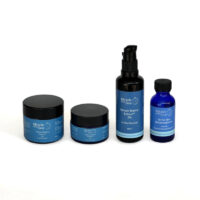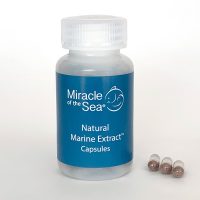The Cultural Evolution of Tanning and Its Dangerous Effects on Our Skin
Sun Tanning
Just How Much Does the Sun Age Your Skin?
The aging of the skin starts to become evident at 30 years of age, and the skin deteriorates on average 1.5% per year. Moderate to severe sun exposure adds another 1 – 1.5% to the rate of skin degeneration. Thus, by the age of 70, sun loving people might not only lose over 90% of their skin’s strength (collagen), thickness (hyaluronic acid), and elasticity (elastin) but also the fibrocytes and capillaries which maintain and nourish the skin.
Before 1950, sun exposure and the subsequent tanning of the skin was undesirable because white porcelain skin was fashionable. To avoid the dreaded tan, people used umbrellas, hats, bathing suits covering most of the body, etc.
In the early 1950’s, a health benefit of sun exposure (stimulating the production of vitamin D) became well known. Subsequently, a tan became a sign of health and even doctors would recommend “going outside to get as much vitamin D as you can.”
The tan also expressed affluence and leisure time. Early in this “sun tanning period" there were no effective sun screens - and even as they developed, people didn’t use them because they wanted to “look healthy.”
In this following video, Dr. Eric Lewis explains how sun damage (ultraviolet light A and B) penetrates through the top layer of the skin, the epidermis, and causes basophilic degeneration of the upper dermis. As this UVL damage accumulates, the skin’s resistance is eventually unable to compensate. When the changes reach that threshold, the basophilic degeneration stimulates the epidermis to produce pre-cancers and cancers that last a lifetime.
Skin Cancer
Where and How Sun Damage Effects the Skin | Pre-Cancers
The cultural emphasis on encouraging sun exposure led to one of the most common, most costly, and - in the case of melanoma - most dangerous health problems in the United States: skin cancer. The lighter the pigmentation of a person’s skin, the more vulnerable he/she is to sun damage.
Currently, almost 30% of all visits to dermatologists involve the negative effects of sun damage.
Skin pre-cancers (actinic keratoses) and cancers (basal cell carcinomas, squamous carcinomas and melanoma) are by far the most common malignancies in the world.
What's worse, once the signs of sun damage and skin malignancies start, they will continue for years and often decades - even if one totally avoids more sun damage. Why?
And why does the pre-cancer and cancer formation happen decades after you have received the majority of your sun damage?
The explanation is based on where and how the sun damage affects the skin.
Lip Health
Most people don’t realize the importance of lip health. It is one of the most dangerous locations to develop sun damage and skin cancer.
Persistent dryness (xerosis) and cracking of the lips (especially the lower lip) is commonly caused by chronic sun damage (actinic cheilitis). Actinic cheilitis creates severe inflammation that leads to destruction of collagen and elastin - and can kill fibrocytes that build and maintain the skin.
While moisturizers and other lip products can slow future injury, they do not address this underlying damage, and therefore offer little or no rejuvenating benefit. Sun damage, pre-cancers and cancers interfere with the skin's healing process and can pose significant dangers. Actinic keratoses on the lower lip can progress to squamous cell carcinoma. In fact, the lip area is one of the only places on the skin that has a predisposition to metastasize into the rest of the body.
Reversing Damage
Reducing the Dermal Basophilic Degeneration that Stimulates Skin Cancer Formation
This damage to the skin comes in two forms: direct and indirect. Ultraviolet light A and B has a direct negative physical and chemical effect. This creates a tremendous amount of inflammation, adding to the total damage.
UVL-A and UVL-B also break down water, causing hydroxyl radical formation (free radicals). Indirectly, this not only acutely damages the skin but also causes chronic damage. These free radicals continue their severe destructiveness many hours and possibly days after sun exposure. They are suppressed by antioxidants such as Miracle of the Sea skin topicals with Natural Marine Extract.
The ingredients in our patented Natural Marine Extract™ appear to show (by biopsy) a slow erasing of the upper dermal basophilic degeneration that stimulates skin cancer formation. Thus, these ingredients not only create younger, thicker skin, but also generate healthier skin.
Natural Marine Extract is available in Miracle of the Sea Aloe Vera Gel and Almond Oil skin topicals, Lip Health Balm, and Natural Marine Extract Capsules (products are shown on the side bar).
Please listen to what customers have to say about their sun damage and Miracle of the Sea Natural Marine Extract. Videos appear at the bottom of this page, with additional examples on our testimonials page.
Reviews
The first thing to know about my skin is that it was heavily damaged from a lot of sun during my teens and 20’s. So, I was going to my dermatologist routinely, on average of every three to four weeks to have sun damage burned off - until I started using Miracle of the Sea. Since then, the number of times that I visit the dermatologist has decreased dramatically. People are asking me what I am doing for my skin and several have started using it as well because of what they saw.
Bennett
I was literally in the sun my whole life. Years later I started paying for it because I had a lot of skin damage on areas that were highly exposed: hands, forearms, face, neck, lip and ears. It was explained to me that the squamous cells on my lower lip can go directly into the bloodstream and kill you. As a patient I was thrilled to see clinically how everything was responding to Miracle of the Sea. But because of a scientific background, I wanted to prove it scientifically, so I volunteered to be a biopsy donor. Miracle of the Sea is indeed working.
Mike C DDS
I’ve been using Miracle of the Sea for a few months now. It has dramatically improved a lot of my pre-cancers on my face, my lip, my nose, my scalp. Almost had to be cut out but now it’s going away. I had big divots on my lip and they are getting better. As a physician, I think it’s a remarkable product preventing me from getting more skin cancers and having to go through aggressive therapy for it.



